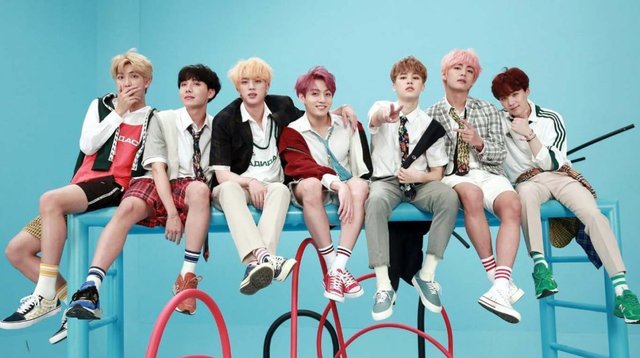The Influence of K-pop in fashion
Hello,
I figured this community would be a good place for posting about the significance of K-pop culture.
Below is an excerpt from an article on Across The Culture, my publication. It was written by Guillermo Forero in Spanish and then translated into English for ATC. The link to the full article, as well as Guillermo's original article, can be found at the end.
THE INFLUENCE OF K-POP IN FASHION

(Courtesy: BTS/Facebook)
A couple of months ago I was walking in Mexico City in search of the famous Zócalo while enjoying the architecture of the place we were passing through: the Museum of Tolerance.
I remember meeting up with my girlfriend and a friend when heads full of color suddenly appeared, moving to the sound of songs in a language I didn’t know. After spending some time watching their movements as we walked, I realized these were the “K-popers” my girlfriend told me about, devoted fans of the beloved Korean musical genre K-pop. The bond between K-popers seems to start and end with shared love for the music and artists rather than shared ideals or beliefs. But clearly it’s all they need to get together.
Given my surprise at Latin Americans dancing and dressing based on a culture as distant as Korean culture, I decided to ask myself a question: how much influence has K-pop had on the West?
In addition to that question, I began to ask whether the K-pop movement could be influencing other areas of life such as our fashion. After all, how can we not expect a worldwide phenomenon to influence what we wear when it even determines the colors we use or even motivates us to make use of signs that identify us to a certain group?
THE KOREAN WAVE or HALLYU
The Hallyu concept is used to explain the expansion of Korean pop culture and entertainment to the rest of the world. This was done through television, films—particularly K-dramas and K-horrors—and music, in which K-pop enters.
The term was first used by a Chinese newspaper in the late 1990s to explain the influence of Korean pop culture that was growing in the country. In its beginnings, the expansion went to nearby countries like Japan and China, but as my own experience indicates, it is already something we can find in cultures as distant as those found in Latin America.
On the other hand, there is one element that is as important or perhaps even more so than the quality of the productions themselves: the state support received by the entertainment industry in South Korea.
In the late 1990s, the Minister of Culture asked the government for greater economic support in order to foster the growth of the Korean cultural industry, including the genre known as K-pop. The quality of Korean production and K-pop works provided the perfect stage for its expansion around the world.
WHAT IS K-POP?
The influence of all these musical genres and resistance movements of the West modeled the change in traditional Korean dress and likewise, the beginning of K-pop itself.
Having understood how Korean culture has been expanding towards the West, it is time to focus on the musical side, K-pop.
The term K-pop refers to a group of musical genres that make up the well-known Korean pop. I catalogue K-pop as a mother genre and not as a single genre because K-pop brings together diverse musical styles such as dance, R&B, and hip hop. In this way, it appeals to an audience with different musical tastes that are willing to appreciate the beauty of the show that sometimes opacifies the music.
K-pop groups—like some Asian designers—began to implement characteristic elements of more “daring” musical genres such as punk: a movement that would have great acceptance in 1980s Korean bands due to its proposal to go against the conservative. Garments worn for conservative looks would be replaced by extravagant accessories, miniskirts and longer hair.
The influence of all these musical genres and resistance movements of the West modeled the change in traditional Korean dress and likewise, the beginning of K-pop itself.
Little by little the resistance movements against the conventional were strengthened until the group Seo Taiji and Boys reached the mainstream in 1990. The group made their foreign cultural influences an intentional part of their presentation via the introduction of genres such as hip hop, rock and techno in their music. The appearance of this Korean group would mark the formal beginning of the current K-pop generation that, unlike the past versions of the genre, would count on Hallyu as the main propagation mechanism.
K-pop is so popular in the world that its artists, led by bands such as BTS, NCT, and BLACKPINK, represent more than 3.6 trillion dollars a year of the economy’s GDP. It has become a monster that affects several spheres of the economy. Bringing BTS back, a study from the Hyundai Research Institute found that this group is the reason one in thirteen people visited the country in 2017. Now, he adds groups like SHINee, Girls’ Generation and BIGBANG that for many years have been making Korea one of the world’s entertainment centers.
Read the rest of this article by visiting Across The Culture! Link below
https://www.acrosstheculture.com/media/music/k-pop-influence-fashion/